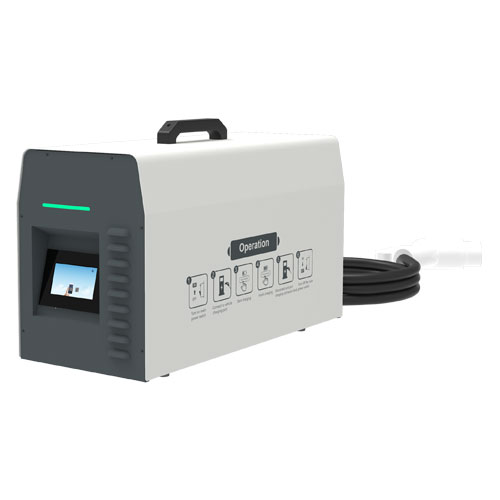Mobile ev DC charger supports 380 volt AC charging and can provide up to 30kw charging power. The independent electric vehicle charging solution does not need to be installed and can support your commercial electric vehicle fleet. It is very suitable for providing flexible charging solutions in different locations.
The parameters of the mobile ev dc charger 30kw are as follows:
Parameters | Requirements | |||
General Requirements | ||||
EV Charger Type | DC | |||
Charger Capacity | 30KW | |||
Equipment size | L650*W280*H369(mm) | |||
Product Model NO. | ENC-DCX030A | ANSI-DCX030A | JIS-DCX030A | |
Mounting | Portable | |||
Input Requirements | ||||
AC Supply System | Three-Phase, 5 Wire AC system | |||
Nominal Input Voltage | AC380V±15% | |||
Input Frequency | 45-65Hz | |||
Environmental Requirements | ||||
Ambient Temperature Range | -25 to 55°C | |||
Ambient Humidity | 5 to 95% | |||
Storage Temperature | -40 to 70°C | |||
Mechanical Requirements | ||||
IP Ratings | IP 54 | |||
Cooling | Air-cooled | |||
Output Requirements | ||||
Number of Outputs | 1 | |||
Type of Each Output | 200-1000VDC | |||
Single Output Max.Current | 125 Amp | |||
Power Factor | ≥0.99(50% load above) | |||
User Interface & Display Requirements | ||||
Display & Touch-Screen Size | 4.3 Inches Touch Screen with Shell | |||
User Authentication | QR Code/ Password Login | |||
Metering Information | Consumption Units | |||
Communication Requirements | ||||
Communication between EVSE and Central server | OCPP 1.6J Protocol (Optional) | |||
Interface between Charger and CMS | Ethernet/3G/4G/WIFI (Optional) | |||
Protection & Safety Requirements | ||||
Executive Standard | IEC 62196 2017, IEC 61851 2017, SAE J1772,CHAdeMO etc. | |||
Safety Parameters | Over Current, Over Voltage, Under Voltage, Residual Current, Surge Protection, Leakage Protection, Short Circuit, Over Temperature, etc. | |||






